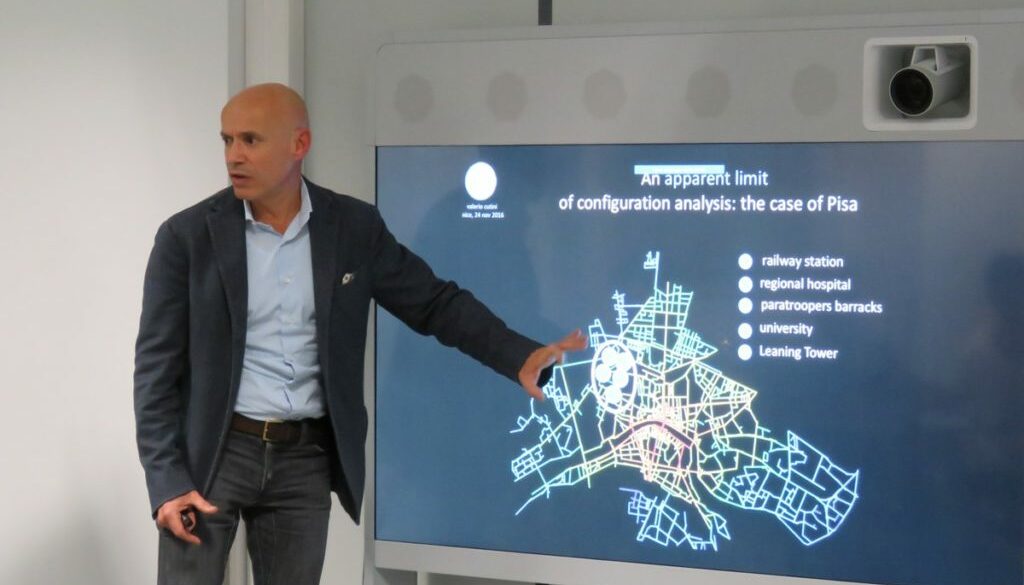Student choice Award – Valerio CUTINI was selected as the best lecturer
The M.Sc. Engineers for Smart Cities’ team values the hard work our lecturers put in to improving the teaching and learning experience of the students. We recognize our most outstanding teachers and want to demonstrate our commitment to teaching excellence and to student learning.
This evaluation is done directly by the people most concerned and close to our teachers, the students. This year, Valerio CUTINI was selected as the best lecturer as part of the MS.c Engineers for Smart Cities.
The entire IMREDD team salute his efforts to make such a difference for students.
Valerio CUTINI works as a researcher in urban and regional planning within the Department of Civil Engineering at the University of Pisa. His research interests are generally oriented towards the analysis of urban settlements, spatial analysis and modelling of urban space. He is a member of INPUT (Innovation in Urban and Territorial Planning) and member of the Board of PhD Course in Energy, Systems, Territory and Buildings Engineering of the University of Pisa.
On this occasion we took the opportunity to ask him a few questions:
– What are your main research areas and interest?
My main research interests are in the area of the analysis of urban settlements and urban development processes, and my contributions mainly concern methods and operational models for spatial analysis, urban morphology, knowledge tools applied to urban modelling.
– What is your course about?
My course is focused on the configurational techniques for the analysis of architectural and urban spaces, and it includes the discussion of the conceptual and theoretical bases of the configurational approach to the spatial analysis, the illustration of the different operational techniques and their actual usefulness. The course does also include a workshop focused on the analysis of a spatial context at a micro-urban scale.
Why is it relevant in the smart city context?
Among the most relevant aspects, I highlight the capability of the configurational approach to link together morphological and functional issues, so as to provide a comprehensive view, pivoted on the role of space: which is not to be regarded as the inactive scenario in which people and activities work and mutually interact but as the primary element of the phenomena that occur within it. On such basis, the students, as provided with the necessary skills for the analysis of the spatial configuration, acquire the capacity to plan and manage the material and intangible aspects and variables that mark out architectural and urban spaces.
– What did you enjoy most in teaching at MSc Engineers for Smart Cities?
What is most exciting is the convergence of students from different disciplines, with various background, skills and interests, and their realizing that the material space they work and live in is the very matrix of their own behaviour, thus getting aware of the importance of knowledge tools suitable for understanding and managing the pattern of movement and interaction and the distribution of positional values.

